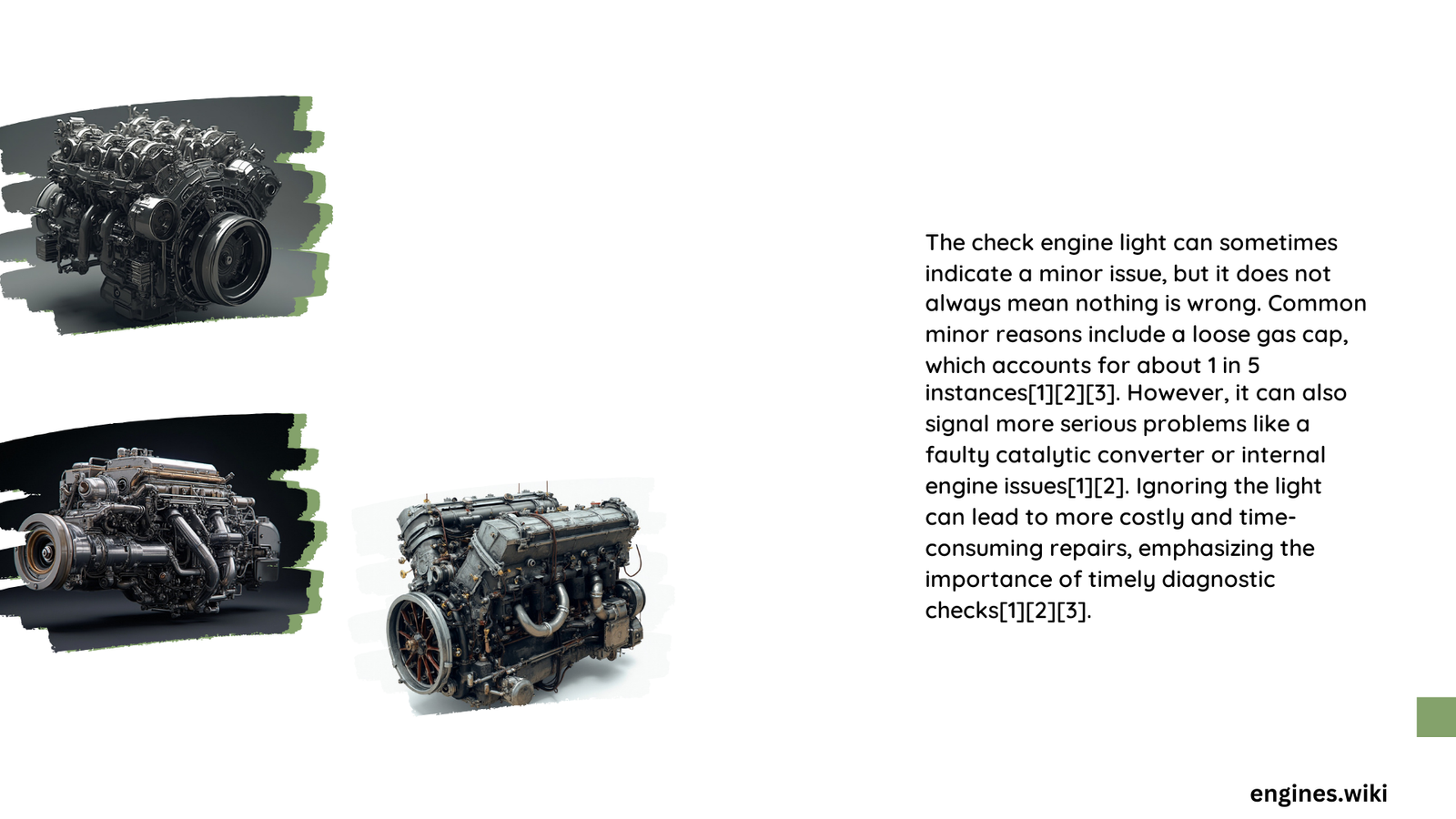The check engine light is a common source of anxiety for drivers. While it often indicates a problem, there are instances where it can illuminate without a serious underlying issue. This article explores scenarios where the engine light may mean nothing significant, helping you understand when to worry and when to relax.
What Are the Common Causes of False Engine Light Alarms?
The check engine light can sometimes be triggered by temporary glitches or minor issues that don’t necessarily indicate a serious problem. Here are some common causes of false alarms:
- Loose gas cap
- Temporary electrical glitches
- Faulty sensors
- Software bugs in the car’s computer system
- Recent fueling or maintenance work
These situations can cause the light to come on briefly or intermittently without any substantial engine problems.
How Often Do False Engine Light Alarms Occur?

While exact statistics are not available, false engine light alarms are not uncommon. The frequency of these occurrences can depend on several factors:
- Age of the vehicle
- Quality of parts and sensors
- Maintenance history
- Environmental conditions
Older vehicles with worn sensors or those that have undergone recent repairs may be more prone to false alarms.
What Are the Diagnostic Codes Associated with False Alarms?
When the check engine light comes on, it’s associated with a specific diagnostic trouble code (DTC). Some codes are more likely to be related to false alarms or minor issues:
| Code | Description | Potential False Alarm Reason |
|---|---|---|
| P0457 | Evaporative Emission Control System Leak Detected | Loose gas cap |
| P0133 | O2 Sensor Circuit Slow Response | Temporary sensor glitch |
| P0101 | Mass Airflow Sensor Circuit Range/Performance Problem | Dirty sensor or temporary issue |
| P0401 | Exhaust Gas Recirculation Flow Insufficient | Temporary valve malfunction |
These codes may sometimes appear due to temporary conditions or minor issues that don’t require immediate attention.
Can Weather Conditions Trigger the Engine Light?
Yes, certain weather conditions can potentially trigger the check engine light:
- Extreme cold or heat
- High humidity
- Heavy rain or flooding
These conditions can affect sensors and electrical components, leading to temporary malfunctions that trigger the light.
How to Differentiate Between a False Alarm and a Real Problem?
To determine if the engine light is indicating a real problem or a false alarm:
- Check for other warning signs (unusual noises, smells, or performance issues)
- Use an OBD-II scanner to read the specific error code
- Monitor the light’s behavior (steady vs. flashing)
- Consider recent maintenance or driving conditions
If the light remains on consistently or is accompanied by other symptoms, it’s likely indicating a real issue that needs attention.
What Should You Do When the Engine Light Comes On?
When the check engine light illuminates, follow these steps:
- Don’t panic – it may be a false alarm
- Check your gas cap to ensure it’s tightened properly
- Monitor your vehicle’s performance for any noticeable changes
- Use an OBD-II scanner or visit a mechanic to read the error code
- If no immediate issues are apparent, continue to drive but monitor the situation closely
Is It Safe to Drive with the Engine Light On?
The safety of driving with the engine light on depends on the underlying cause:
- Steady light: Generally safe for short distances, but get it checked soon
- Flashing light: Indicates a severe problem – stop driving immediately
- No other symptoms: Likely safe to continue driving, but monitor closely
Always err on the side of caution and have your vehicle inspected if you’re unsure.
How Can You Reset the Engine Light?
While it’s not recommended to reset the engine light without addressing the underlying issue, here are the general methods:
- Use an OBD-II scanner to clear the code
- Disconnect the car battery for a few minutes (may reset other systems)
- Drive the vehicle for a few days – it may reset on its own
Note: Resetting the light without fixing the problem may cause it to reappear soon after.
What Maintenance Can Prevent False Engine Light Alarms?
To minimize the chances of false engine light alarms:
- Follow the manufacturer’s recommended maintenance schedule
- Use high-quality replacement parts and fluids
- Keep electrical connections clean and secure
- Address minor issues promptly before they escalate
- Regularly check and tighten the gas cap
By maintaining your vehicle properly, you can reduce the likelihood of both false alarms and real engine problems.
In conclusion, while the check engine light can sometimes mean nothing serious, it’s always best to err on the side of caution. Regular maintenance and prompt attention to warning signs can help keep your vehicle running smoothly and prevent unnecessary worry over false alarms.
References:
1. Oxford Automotive: A Check Engine Light Warning Is Usually False, Right?
2. Foxwell Diag: Can Check Engine Light Come On and Nothing Be Wrong?
3. Tolima’s Auto Center: Check Engine Light False Alarms » Astoria Mechanic
